The arms of Robert Hillberg. Part one
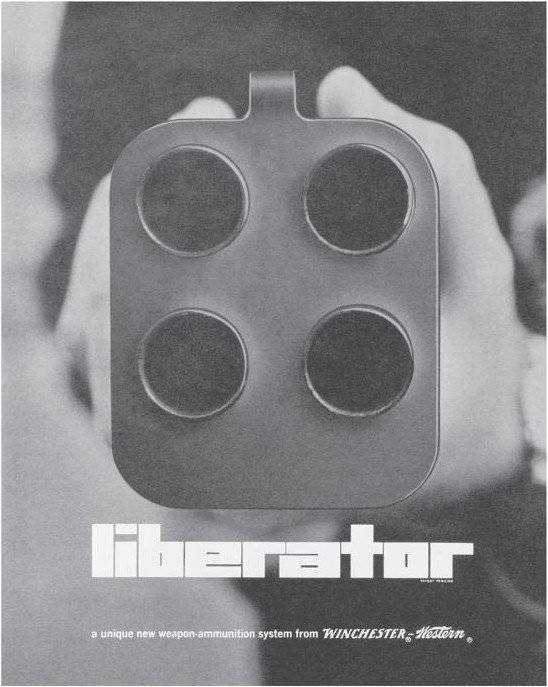
Dear readers! With this material I begin a series of publications devoted to arms, designed by American designer Robert Hillberg (Robert Hillberg).
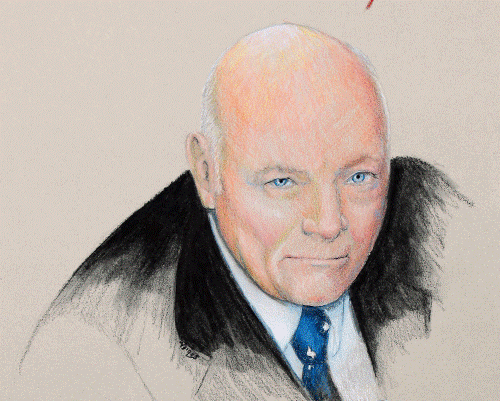
Cold War Echo: The Winchester Liberator (Liberator)
Weapons for example, which will be discussed in the first two publications, belong to the category of “Weapons for underground workers”. For the first time this concept appeared during the Second World War: then there was a need to supply the underground fighters in the territories occupied by the Nazis with simple and inexpensive weapons that could be produced quickly, cheaply and in large quantities.
One of the most famous examples of the “Arms of the Underground Workers” is the Sten submachine gun. It was produced in large quantities, first for the needs of the army, but after the British army received it in sufficient quantities, they began to supply them with partisans and resistance fighters throughout the territory of occupied Europe. Very soon, both sides were convinced that this primitive device, produced under extraordinary circumstances, was capable of killing just like any other weapon ...
Influence zone - the whole world
Winchester Liberator (Liberator) - the fruit of engineering Robert Hillberg (Robert Hillberg). This “democratizer” was developed at the height of the Cold War to arm rebel and guerrilla formations on the enemy’s territory from pro-American local people.
Perhaps the impetus for the creation of these products was the revolution in Cuba.
After the failure of the operation in the “Gulf of Pigs” in the United States decided to move from open clashes with the enemy to the guerrilla war and, of course, there was a need to supply their agents with weapons. It was here that Robert Hillberg appeared with his shotgun Liberator (Liberator).
Winchester Liberator: Four trunks and the whole sky in parrots ...
Virtually all partisan wars involved the indigenous population. As a rule, these people are completely unfamiliar with military affairs and do not have weapons skills. As a result, the ideal weapon for partisans should be simple and reliable. And more importantly, it must have a high probability of hitting the target at the very first shot, even in the hands of an unqualified shooter. The shotgun meets all these requirements as well as possible, and the projects proposed by Robert Hillberg brought this class of weapons to a new level of development.
The Hillberg project for the creation of partisan weapons was based on several requirements: in addition to the requirements for a high probability of hitting a target and a lethal outcome, it had to have adequate firepower, without being too complicated technically. These requirements repeated the TZ of the Second World War, as a result of which a single-shot was developed and produced. gun Liberator FP-45, namely: the creation of a simple to use, compact and very cheap weapons.
Like 20 years ago, it again became necessary to throw weapons into the enemy’s rear in such quantities that the enemy would have no opportunity to remove in full.
At the beginning of 1962, Robert Hillberg proposed his first concept of a rifle device for insurgents. He took the scheme as the basis Ethana Allen (pepperbox), reworked it, and it turned out to be a multiply-loaded multi-barreled gun, which possessed a rate of fire of a semi-automatic rifle.
Unlike the traditional scheme of pepperbox, the block of trunks did not rotate, as, for example, in the Gatling machine gun. The sequence of shooting was provided by a patented hammer mechanism with a hidden trigger position. It had a cylindrical shape and rotated around its axis due to the hole drilled in it. In short, the principle of the USM looked like this: when you press the trigger pedal (the hand did not rise to write the “trigger”), the trigger was cocked and turned 90 degrees. Then he hit the cartridge's cap - as a result of which a shot occurred. After he retreated back (cocked), scrolled back to 90 degrees again, hit the primer again, and so on. In other words, the shock group made reciprocating movements, turned around the barrels to the next cartridge and pricked its cap.
Due to the very high probability of hitting the enemy with a shotgun at a short distance, it promised to be a very effective weapon. The designer was confident that even an inexperienced shooter with a series of shots from the multi-barrels would be able to lay down his opponent.
Initially, Hillberg proposed a weapon with a monoblock of four barrels arranged in the form of a rhombus (vertikalka plus two additional barrels on the sides).
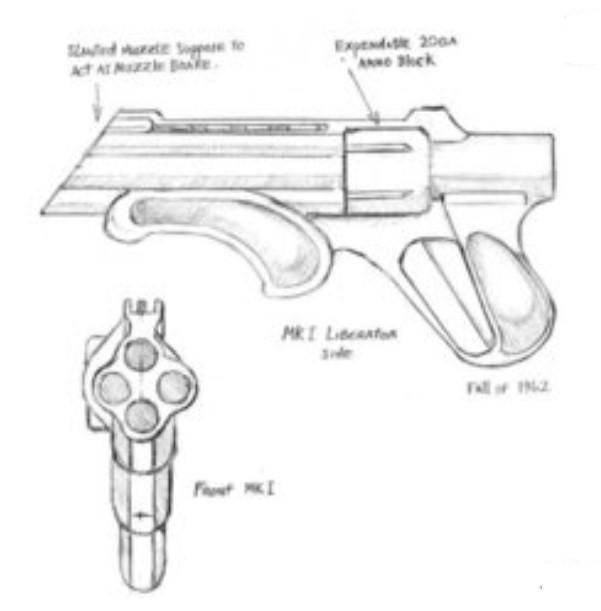
If I translated the text correctly, the trunks were supposed to be cast in one piece. The design provided an 4-cartridge holder for fast loading type speedloader and a mechanism for simultaneous ejection of the plate with shot cartridges. The ejection mechanism was activated by pressing a finger on the lever.
A preliminary analysis showed that the gun design Robert Hillberg has a number of advantages. It was designed for 20 caliber cartridges, and the length of each barrel was 16,1 ”(40,89 cm). The overall height of the weapon was only 8 cm, which made it relatively compact and comfortable to carry and transport, and also made it easy to maneuver with it in a confined space. It weighed only 4 pounds (1,8 kg), but the design had sufficient strength and allowed working under high shock loads in a wide range of temperatures and in different climatic conditions.
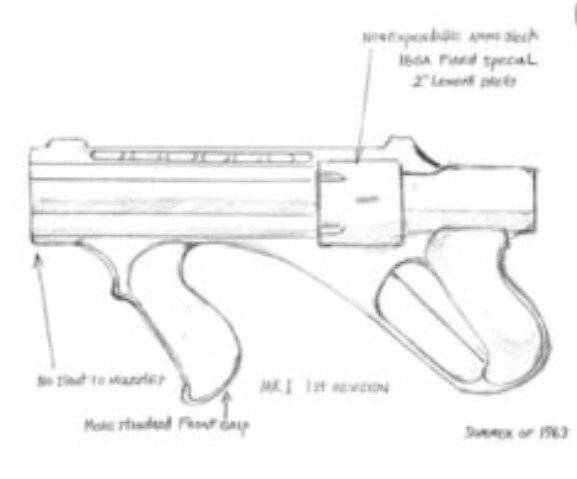
Added tactical handle and changed the shape of the muzzle.
When Hillberg finished his design drawings, he turned to the Winchester campaign and offered them his creation. They agreed that the weapon deserves attention, but asked for a little time to study his proposal.
Engineers of the Winchester campaign found that when using the latest casting technology and making small changes in the design, the cost of one unit will fluctuate at $ 20 (at prices of 1960-e).
Armed with the results of their research, representatives of the Winchester campaign offered the Hillberg concept to the Ministry of Defense. Soon, their proposal was supported by the DARPA (Agency for Advanced Defense Research and Development of the USA): they decided that this weapon has great potential, especially in Southeast Asia, where the United States was involved in another conflict.
Having received the support of DARPA, the guys from Winchester decided to develop the project and gave it the working name Liberator (Liberator) in honor of the gun of the same name, which was produced at General Motors in the middle of 40's (see above). The continuation of tradition, so to speak.
At the very beginning of the production of the Liberator (Mark I) guns, problems with the clip for fast loading (speedloader) were found, as it did not fulfill its function: the cartridge holders did not want to be inserted into the barrels the first time, and the shape of the holder was rather complicated .
Liberator Mark II
In a later version of the Liberator (Mark II), the clip for quick loading was abandoned in favor of the traditional method: manually, one cartridge each. This simplified the production process. In addition, for a more convenient shuffling of trunks, it was decided to change their location to a more rational one. As a result, in the Liberator II version, the trunks were already placed horizontally and in pairs, and the axis and hinge of the trunk block were made more massive and easier to manufacture. This scheme allowed to distribute the load from the shots on the maximum possible area. Due to this, the high operational strength of the gun was achieved, which guaranteed the absence of the appearance of the barrel of the barrel block. For fixing the 2-x halves of the weapon in the closed state, a primitive T-shaped cap holder was used. It was said that it resembles an old and kind castle, borrowed from revolvers with a shimmering frame of the end of 19 and the beginning of 20.
On the main components and mechanisms for the Liberator Mark II rifle, Robert Hillberg received a patent under the number US 3260009 A. The patent was issued on December 23 1964 on “Multi-barrel firearm with rotatable and reciprocable hammer”. Photocopies of the drawings from the patent are laid out below.
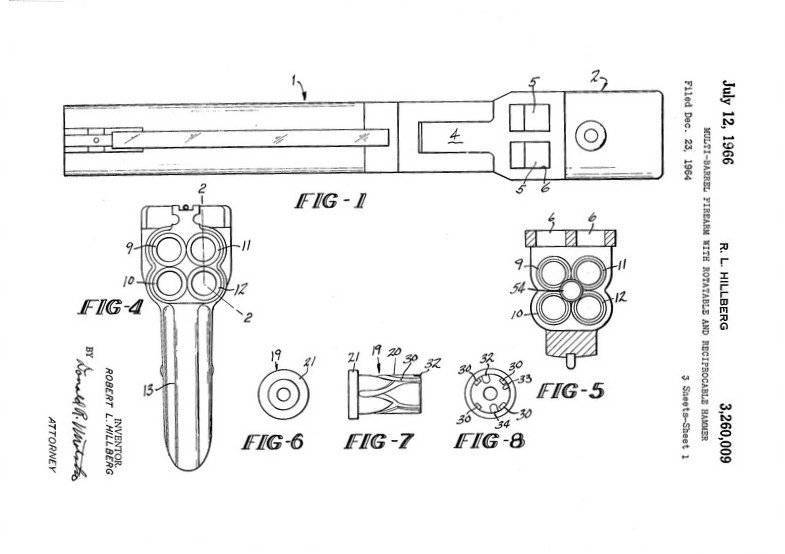
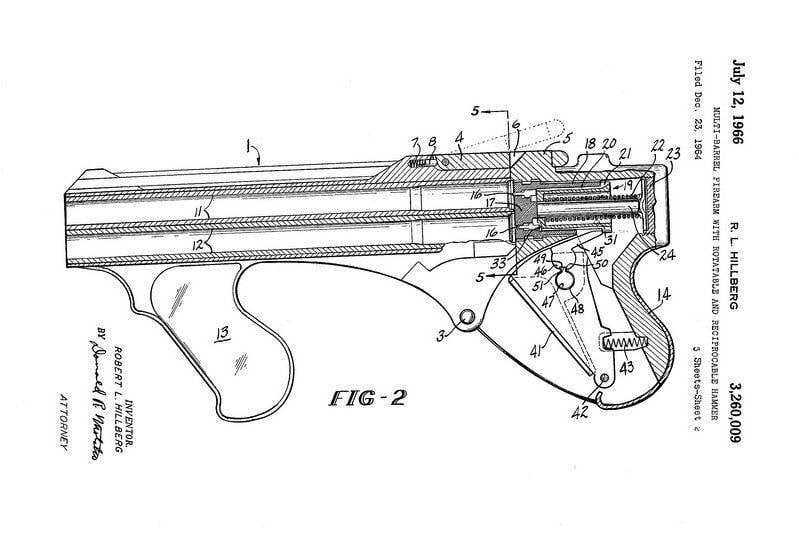
The result was a highly simple and reliable design that made the Liberator a weapon with decent firepower.
In order to increase the range of effective fire and the damaging ability, the caliber of the weapon was increased to 16, which allowed the use of Winchester Mark 5 shot collars for the army in the Liberator. The difference was only in the weight of the shot projectile: 28 g for 16-caliber and 24 g for 20-caliber with the same base 16 mm.
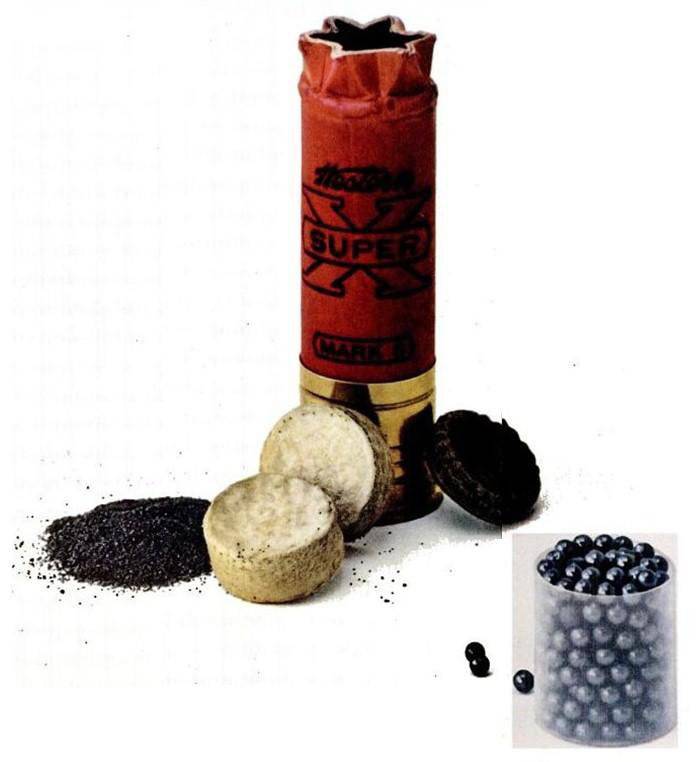
The use of standard 16-caliber ammunition equipped with a canister allowed the Liberator to easily hit chest figures at a distance of 30 yards (27,43 meter). On average, the probability of hitting a target was at least three hits with five shots.
Magnesium was widely used to reduce weight when casting parts for the Liberator (Mark II). All surfaces of the gun covered with epoxy paint. To improve the stability of the weapon when aiming, a removable shoulder wire support was developed.
In order to reduce the dispersion of the shot, when shot, the trunks of the modified Mark II had choke points, which according to international designations were classified as Full choke. Due to this, the accuracy of the battle with medium and small fraction numbers should have reached 60-70%. Indicators of the battle with large fractions and grapeshot were unstable, but shooting was also possible with special round bullets.
The length of each barrel was 13,5 inches (34,29 cm), the total length of the weapon was 18 inches (45,72 cm), and together with the butt it weighed 3,44 kg.
In the middle of 1963, the Winchester campaign began to offer the Liberator Mark II to various security agencies. Both the representatives of the army and the representatives of the police were impressed by the simplicity of the construction of the Liberator and his firepower. After such a reaction from the security forces, Hillberg and representatives of the Winchester campaign clarified a bright future for the Liberator: after all, thanks to his merits, he had a chance to find a wider use besides the “partisan gun”.
However, in the course of the army trials, the shortcomings of the Liberator began to appear. Although the shoulder rest gave stability to the weapon, but the accuracy suffered because of the long and tight running of the trigger pedal, as well as its shape, which was designed to compress 4 with my fingers at the same time.
Given the fact that the Liberator fired by self-cocking, there was no question of any accuracy when shooting at medium distances. It turned out that the decision, which was considered successful for a peasant rebel, was no good for a trained soldier.
Liberator Mark III
Not wanting to lose large customers in the face of the army and the police, it was decided to bring the Liberator to acceptable levels. Thus, the Liberator Mark III appeared.
The third generation of the Liberator received another trigger mechanism: with an open arrangement of a revolver-type trigger and a traditional trigger with a shorter, smoother and softer descent. The sequence of firing was provided by the cam mechanism, which changed the position of the firing pin and provided firing from each barrel in turn.
The Winchester campaign engineers, who by then were solely responsible for the project, decided to make changes to the design of the barrel assembly and their manufacturing technology, as there were difficulties in producing them as a single part.
To simplify production, it was decided to replace the complex simultaneous casting of a block of barrels with 4 separate steel tubes that would be attached to the breech, and a rectangular metal plate would connect the barrels in the muzzle section. The lock was changed to fix the 2-x halves of the weapon in the closed position, and to open (break) it was installed on both sides lever flaps.
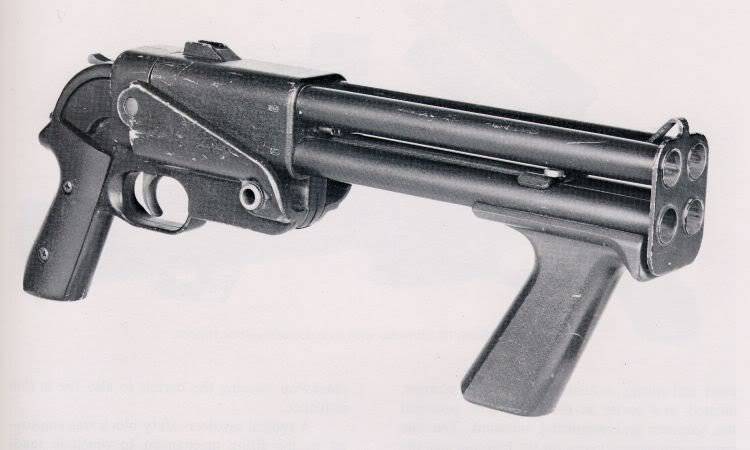
For more attractiveness, the Mark III was converted to the standard cartridge of the 12 caliber (the weight of the 32 g shot, with the 28 g of the 16 caliber). The overall length of the Mark III was increased by 1 / 2 inches (16 mm), and the weight was 7 pounds (3,17 kg).
USM revolver type met expectations: the mechanism turned out strong and reliable and in addition it had a double action. As a result, the accuracy of the battle improved. During the shooting, it was determined that the shot of the grapeshot (36 units) fired from the 3 generation of the Liberator hit targets at a distance of 60 meters.
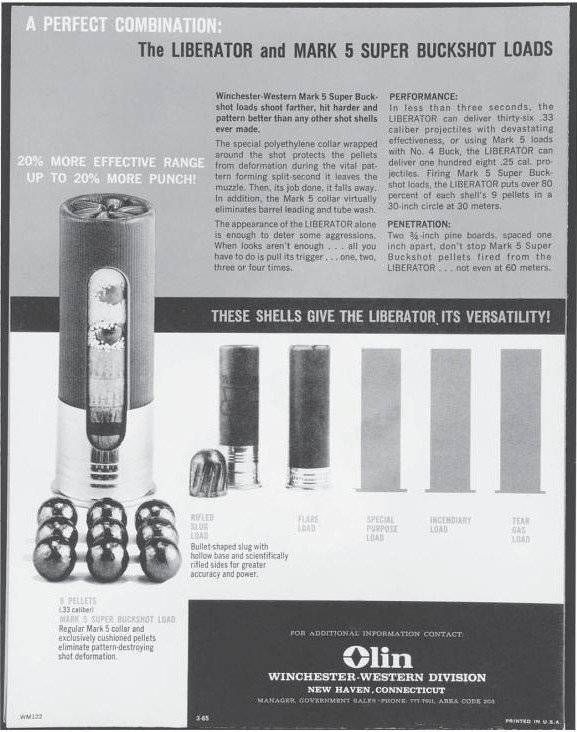
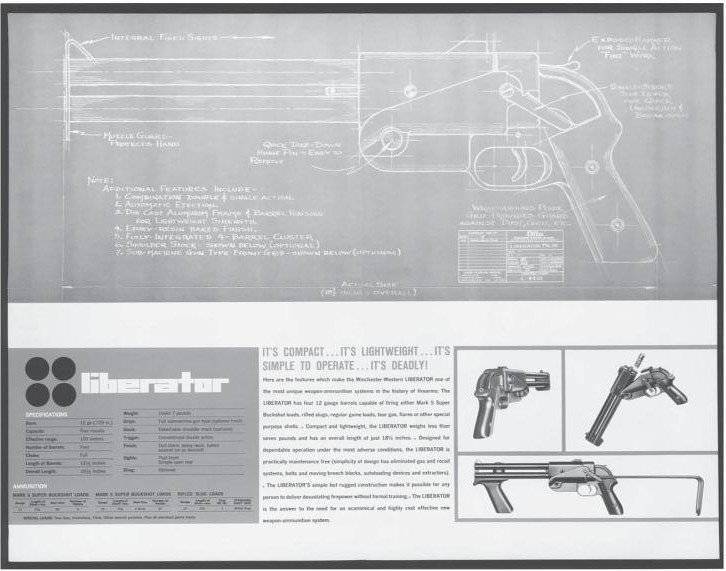
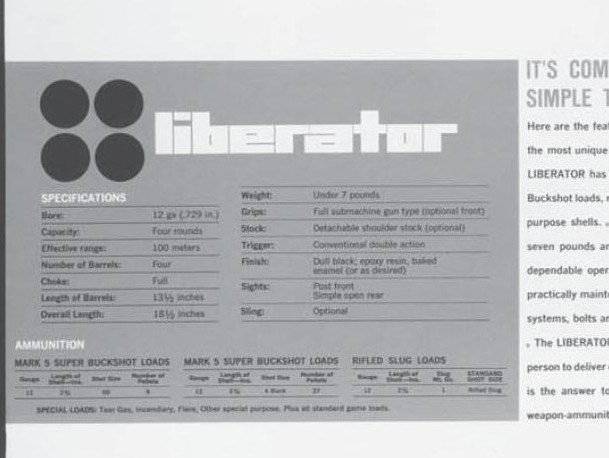
Unfortunately, orders from the military, which so hoped for in the Winchester campaign, did not follow. Yes, and on the police market, it also failed to “shove”.
Winchester Liberator is not the only attempt to create a four-barreled shotgun. Here is another sample:
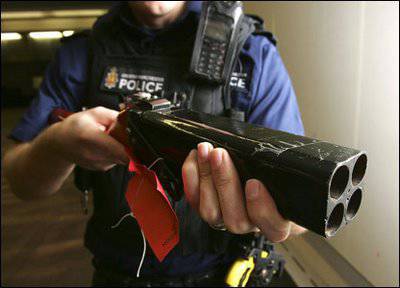
There were also attempts to create something multi-stunning specifically for the cinema. Non-existent weapons (props), specially created for the next film adaptation of the comic book on the theme “The Avenger”.
Octopus (Samuel L. Jackson) with a pair of “Quad shotgun”.
There were also curiosities associated with multi-barreled shotguns.
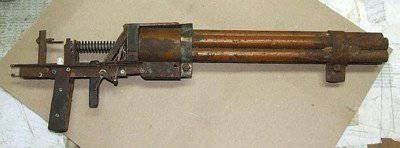
To be continued. Preparing for publication material about Colt Defender (Defender)
Information sources:
http://www.guntech.com
http://www.militaryphotos.net
http://books.google.com
http://www.thefirearmblog.com
http://xavierthoughts.blogspot.com
http://getwar.ru
http://www.guns.yfa1.ru
http://forum.terraanalytica.ru
http://en.wikipedia.org
http://topwar.ru
http://www.tempgun.ru
http://www.peashooter85.com
http://baron-engel.deviantart.com
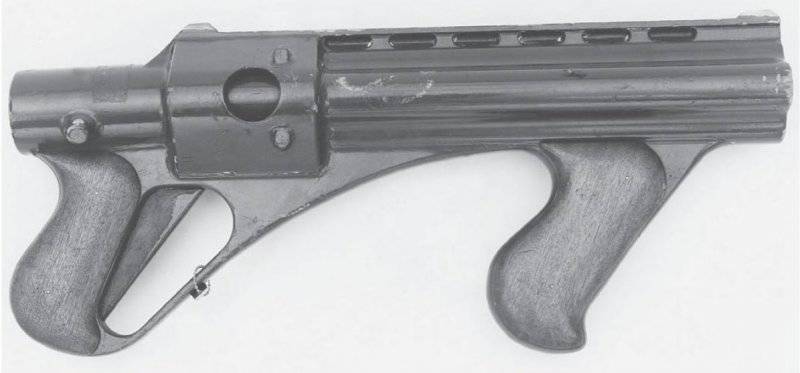
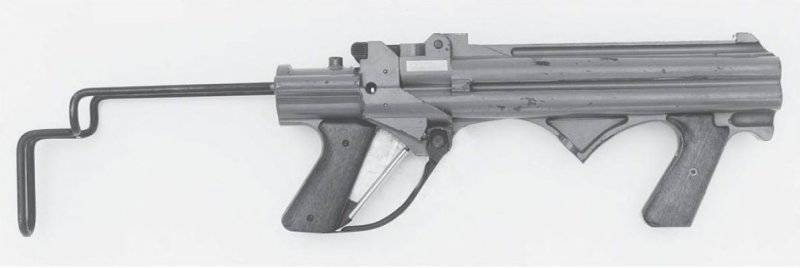
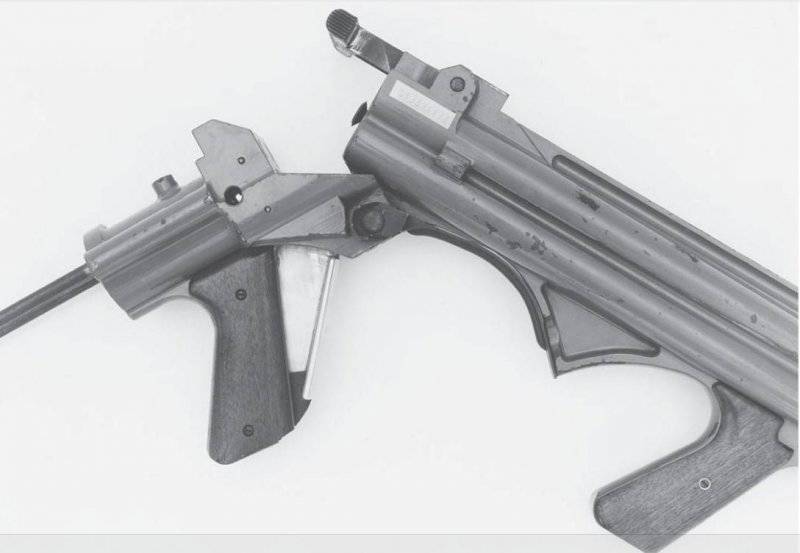
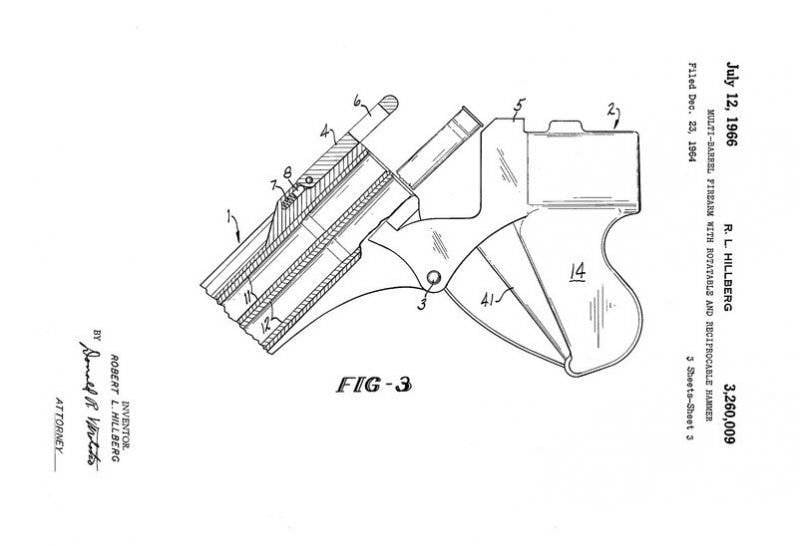
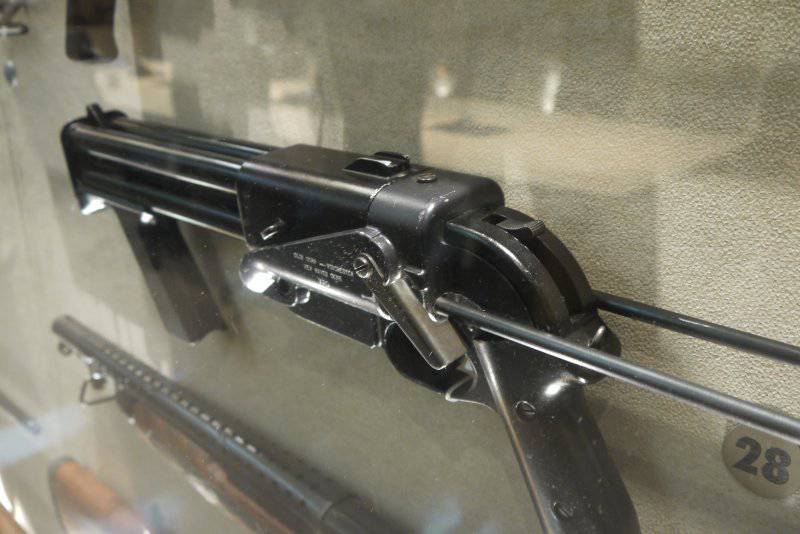
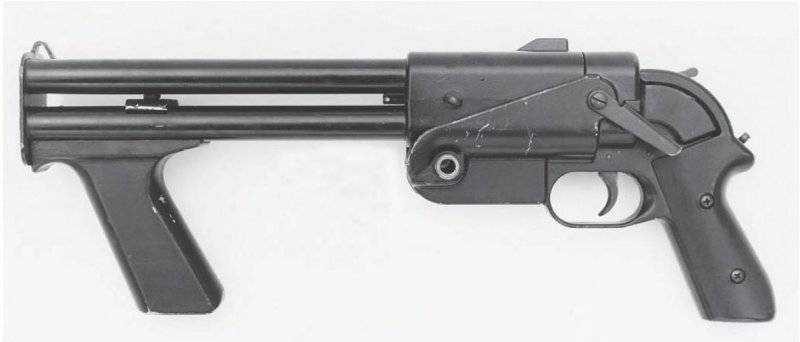
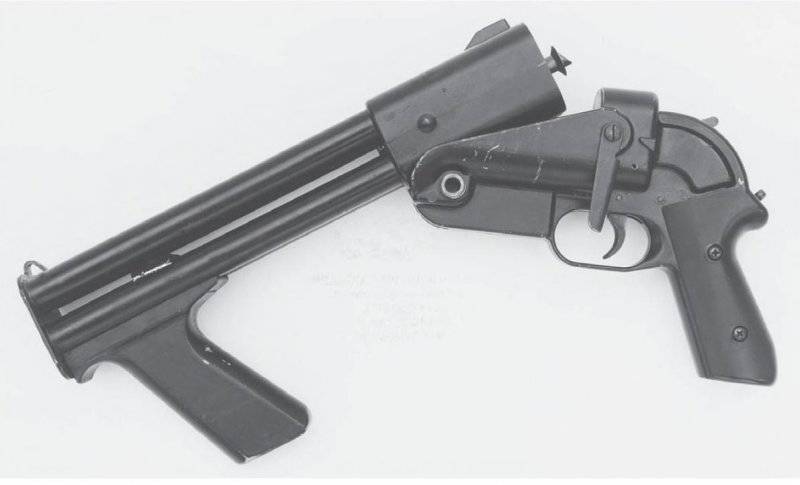
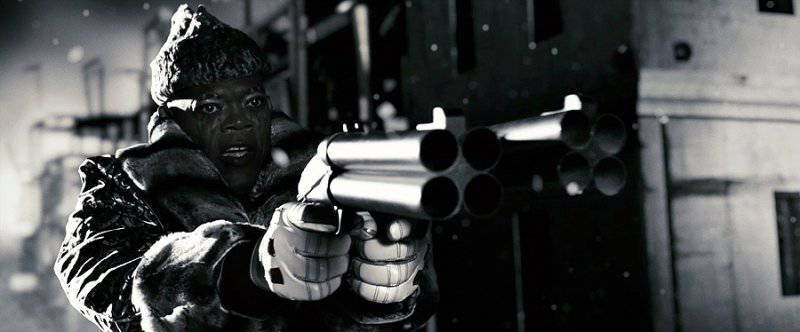
Information